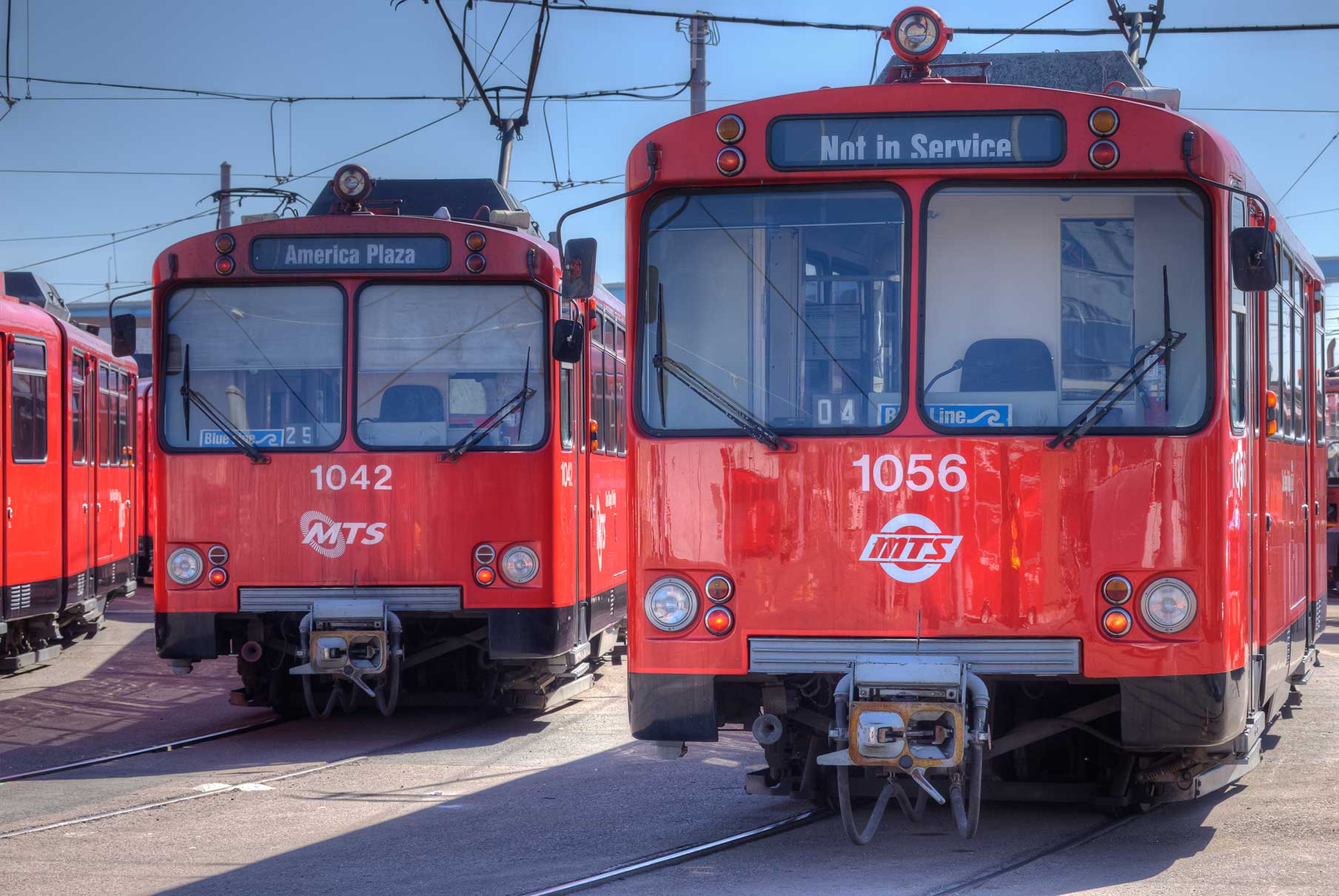San Diego Metropolitan Transit System awards a multi-year rail maintenance contract to Advanced Rail Management
November 2020

San Diego Metropolitan Transit System – Photo by Jack Lindquist
The San Diego Metropolitan Transit System, on behalf of the San Diego Transit Inc., has awarded Advanced Rail Management Corp. (ARM) a five-year contract for the development and operation of a long-term rail maintenance program that includes rail grinding on all open and embedded track sections and special trackwork. The program will include a review of the existing wheel/rail profile compatibility, analysis of rail profile and wear conditions, and design and execution of a rail grinding program to remove defects, enhance vehicle steering through curves, and reduce noise on the system.
To meet SDTI's requirements, ARM will:
- utilize its optical rail measurement system to conduct a pre-grind survey
- develop a five-year grinding strategy
- implement and oversee the annual grinding program
- conduct an annual post-grind assessment to ensure that the grinding plan is meeting the objectives
ARM, along with the National Research Council of Canada (NRC), its subcontractor on the project, will review new and worn wheel profiles on the system to ensure that they are compatible with the existing rail profile design. The NRC will then develop grinding templates that enhance steering in curves and generate multiple wheel/rail contact bands to distribute wear in tangent track.
In addition to establishing and maintaining the appropriate rail profiles, the rail grinding program will be designed to control:
- Defect development: The depth of cut (metal removal) will be increased as needed to remove defects or arrest the growth rate of defects that cannot be totally removed by rail grinding.
- Surface fatigue: Surface fatigue appears as cracks on the rail surface that arise from repeated high contact stresses that occur in the wheel/rail contact patch. Left untreated, these cracks tend to grow in length and depth and ultimately lead to other defects, such as shelling, spalling, head checks and other types of fatigue-related defects. ARM will utilize a variety of techniques, such as grind pattern selection, template design, variations in grinding speeds and grinding motor horsepower to remove or arrest surface fatigue, depending on its severity and the overall condition of the rail.
- Gauge-corner fatigue: Gauge-corner fatigue and wear in curves will be corrected or arrested through the application of proper templates on the high and low rails to promote steering.
- Corrugation: Corrugation is a significant problem on transit systems. Repetitive patterns of shallow depressions that are often generated by tractive and braking forces occur longitudinally along the surface of the rail.
“Corrugation negatively affects ride quality and generates noise, sometimes known as roaring rail, which impacts riders and residents and businesses in proximity to the tracks,” said Mark Reimer, ARM's Director of Business Development & Projects. “The only way to remove them is through rail re-profiling. ARM's grinding plan is designed to remove existing corrugation and inhibit its regrowth.”
Post-grind surveys will ensure that the goals of the grinding plan have been met. ARM will also conduct Optical Rail Measurement programs at the mid- and end point of the contract. Data from these runs will be used to verify the economic benefits of the grinding program and to assess rail wear and surface condition trends for long-term maintenance planning.
are excited to work with the professionals at ARM again,” said Fred Byle, San Diego Trolley Inc.'s Superintendent of Wayside Maintenance. “During the previous contract ARM developed a rail grinding plan to remove surface defects and control the contact band on a curve with 90-pound rail that was experiencing severe gauge-face wear. ARM's efforts significantly reduced the wear rate, allowing us to get two additional years of life out of the rail. This additional time allowed MTS to get a rail replacement contract in place and remove all the 90-pound rail on the system,” Byle said.
“The ultimate goal of the current five-year griding plan is to help the San Diego Metropolitan Transit System move from a corrective to preventive grinding plan,” said ARM President Gordon Bachinsky. “Along the way, the program will reduce rail and wheel wear, noise and vibration, and derailment potential. And it will improve ride quality for passengers.”
ARM is a consulting/services company that specializes in providing expertise in all areas related to the wheel/rail interface to railways and transit systems.
For more information contact:
Gordon Bachinsky
Advanced Rail Management Corp.
gbachinsky@arm-corp.com
321.984.1474